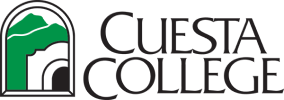
Program Summary
NUTRITION AND DIETETICS - Associate in Science for Transfer
The Associate in Science in Nutrition and Dietetics for Transfer degree (AS-T in Nutrition and Dietetics) prepares students for success in a baccalaureate degree in Nutrition and Dietetics with the lower-division coursework required to transfer into the CSU system. Students learn about chemicals and nutrients in food and their effects on the human body and the world. The study of nutritional science contributes to preparing students for careers as nutritionists, registered dietitians (RD), food scientists, or other dietetics professionals. The study of Nutrition provides a broad foundation in a practical and personally applicable exposure to a variety of scientific areas of nutrition such as chemistry, biochemistry, microbiology, anatomy, physiology, and biology. Popular topics include microbial pathogens, environmental contaminants, nutrigenomics, macronutrient balance, energy metabolism, obesity, global issues, biochemistry of exercise, and micronutrient and phytochemical utilization. Students in the program learn how the scientific method and process contributes to nutritional requirements and how nutrients function from a cellular to more practical level, and then apply this knowledge to their own health. The program also helps students understand the role of nutrition in disease prevention throughout the lifecycle and as an impact on society as a whole.
The Associate Degree for Transfer (AA-T or AS-T) is a special degree offered at California Community Colleges. Students who earn an AA-T or AS-T degree are guaranteed admission to a campus within the California State University (CSU) system in a similar major, although not necessarily to a specific campus. Students who complete an AA-T or AS-T are given priority consideration when applying to a particular program that is similar to the student’s community college major and will be given a special GPA advantage when applying to CSU impacted campuses or majors. Students who are planning to pursue an AA-T or AS-T are strongly advised to meet with a counselor for additional information about this transfer program.
The Associate in Science in Nutrition and Dietetics for Transfer degree requires:
(1) Completion of 60 semester units that are eligible for transfer to the California State University, including both of the following:
(A) California General Education Transfer Curriculum (Cal-GETC).
(B) A minimum of 18 semester units or 27 quarter units in a major or area of emphasis, as determined by the community college district.
(2) Obtainment of a minimum grade point average of 2.0.
(3) Earn a “C” or better grade in all courses required for the major or area of emphasis. A "P" (Pass) grade is an acceptable grade for courses in the major.